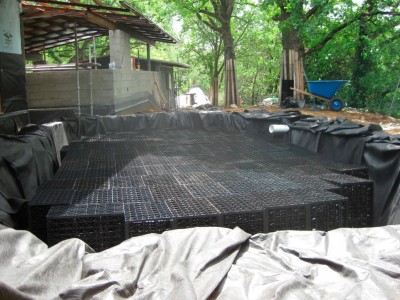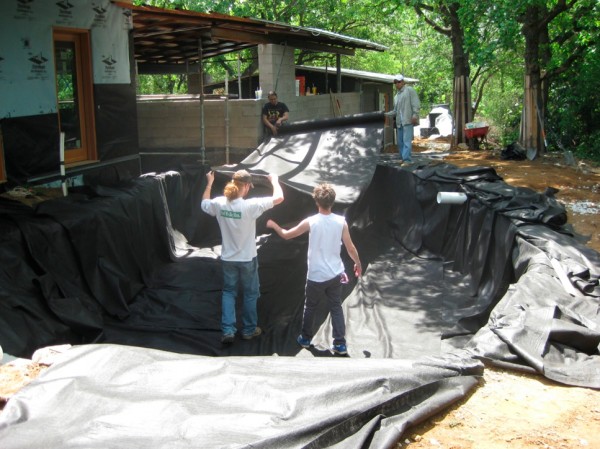 Turn an unused pool into an eco-friendly space
Turn an unused pool into an eco-friendly space
By Jef Tingley
It’s been said that swimming pools are like boats — they’re lots of fun, but it’s better to have a friend who has one than to have one yourself. Sure, the escape from Dallas’ hot summer sun into a private blue lagoon can be rewarding, but the upkeep and maintenance can be overwhelming, not to mention pricey.
Historically, homeowners who called it quits with their pools had few options. They could either drain it dry, leaving both a backyard eyesore and a would-be skate park for marauding teens, or fill it in which takes a surprising amount of dirt (and cash). But now, there’s a third option for saying au revoir to an outdated oasis: giving it a new life as an ecologically friendly rainwater tank.
“Just about any pool can be transformed into a [water storage tank],” says Jeremy Delost, owner of Rainwater Harvesting Systems, which has been transforming unwanted pools across North Texas since 2008.
As Delost explains it, there’s always a cost involved with owning a pool. If it’s usable, the homeowner has to continually pay for water, chemicals, resurfacing, maintenance and prepping for the season change. Demolition of an unused pool can be fiscally challenging due to the labor and materials. And while the conversion of a pool into a rainwater cistern comes with an initial expense, it actually helps to save some money in the end by reducing water bills.
“Many of our customers just don’t want to keep up with the maintenance of their pools any longer. Their kids may be grown or they just don’t use it,” says Delost. “Changing the pool into a rainwater tank saves time, saves money on water bills and helps the environment.”
The process for changing a pool begins by sealing it watertight. According to Delost, even if an outdated pool cannot hold water it can still be transformed by fitting it with a liner. From there, the curved bottom of the pool is leveled with rock. This prepares the space to receive a series of milk-carton-like boxes that will later support the topsoil allowing it to be nearly undetectable in the yard.
The boxes are wrapped in water-permeable cloth, put in position in the pool, filled in on the sides with aggregate and topped by a geo-grid mesh that allows rainwater to seep through.
Finally, the entire structure is covered with topsoil leaving a buried “green” treasure ready to catch the rain, which can be used for lawns and gardens thanks to the assistance of a submersible pump installed during construction.
The final product isn’t just functional; it’s sturdy, too. “When finished, [the tank] could take the weight of a truck,” says Delost.
And that’s how the cycle of recycling carries on … from swimming pool, to water tank, to potential parking space.
This article appeared in the Dallas Voice print edition April 15, 2011.
















